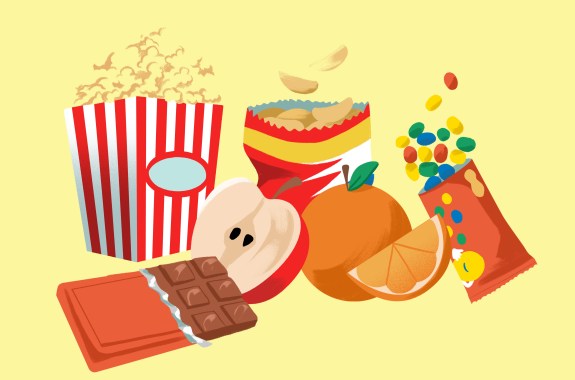Grade Level
6 - 8
minutes
1-2 Class Periods
subject
General Science
stem practices
Engaging in Argument from Evidence
Activity Type:
How would you define a snack? People around the world eat many different foods as snacks, from potato fries to grubs and beetles. Would you consider eating these? Why do you think there are so many different varieties of snacks?
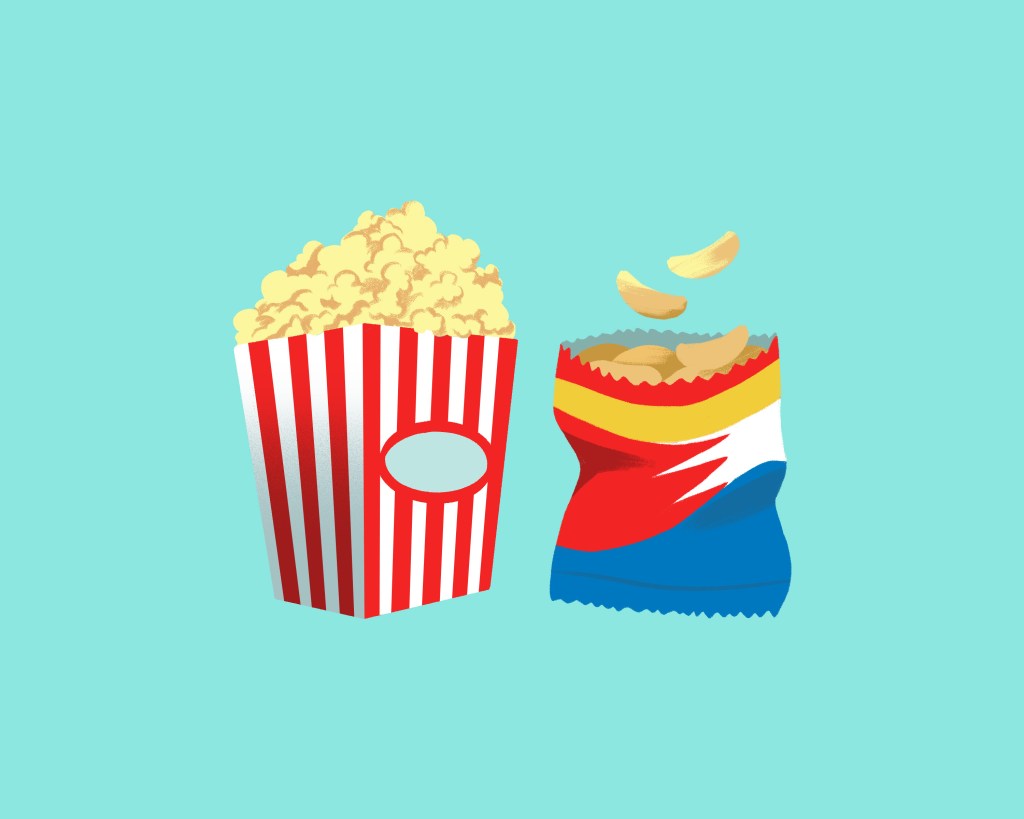
Think about a bag of popcorn. How would you describe it? Salty, maybe? Or crunchy? When we group items by their characteristics, we call it classification. For instance, when you group snacks by whether they are salty or sweet, sticky or crunchy, you are classifying them!
Classification helps us to group, organize, and understand the world around us. For example, our food is organized by type in grocery aisles, and our school day is organized by subjects, class periods, and students. Scientists use the same idea to create a taxonomic system, which categorizes and groups living things, or the periodic table, which is used to organize and group elements. In this activity, you will develop your own system for classifying foods, and in the process, develop the skills you’ll need to understand other classification systems.
Understanding Classification Systems
Watch this video about snacks around the world. Would you like a grub like the Australians, boiled peanuts like people from the state of Georgia, or street corn like they do in Mexico?
Watch the video, then discuss the following questions:
- What were some of the ways that this video organized snacks from around the world into different groups by type?
- Were there any types of snacks that you would love to try?
- What did those snacks have in common?
- Any that you’d avoid at all costs?
Even while watching this video, you’ve likely already started building a system of classification in your mind about which snacks you’d like to try, and which ones you would not. Your brain is a natural classifier.
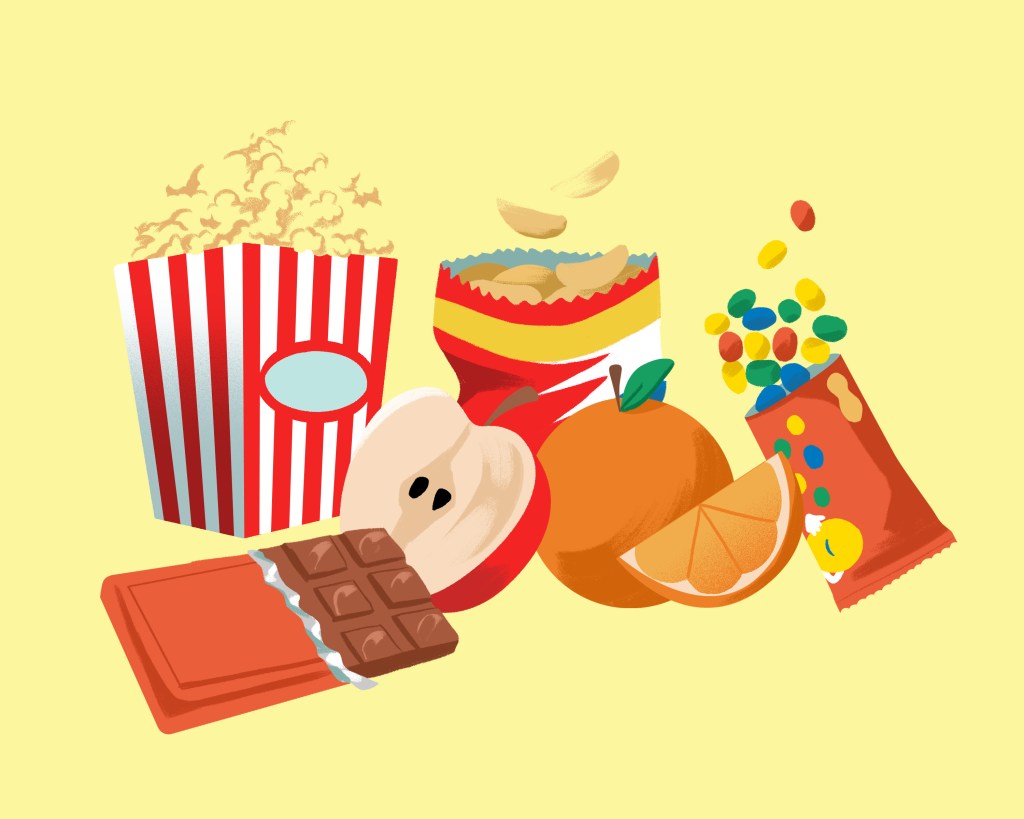
Activity #1: Snack Classification
With friends, classmates, or family members, you will assemble and sort a collection of different snack foods. Are you a traditionalist who likes chips or popcorn, or will you bring in a snack that will raise eyebrows? What will your friends bring? Let’s find out! For this to work, every member of your class or group will need to bring their favorite snack food in its original packaging. Adults: Be aware of food allergies and safety—this activity works even if the food stays in packages, or it can be done with foods that you provide!
Observe Your Snacks:
- Sit in groups of four or five to a table.
- Place everyone’s snacks on the table, and make some observations about the different snacks. Think about their color, shape, texture, flavor, and other traits as you make your observations.
- Based on the group’s observations, work together to sort the snacks into categories for five minutes. After that, if you’ve got a big class with multiple groups and tables, have groups rotate to a different table, and view and categorize another group’s snacks.
Share:
- Have one person from each group share how they categorized the snacks on their table. Learners can record the presented categories on their own, but someone should create a big list of the categories for the whole class to see.
- After everyone has shared, discuss any similarities in how items were categorized: Were there categories that multiple groups used? Ones that didn’t seem to apply to some snacks?
- As a class, decide on a common list of no more than six categories for organizing snacks, based on the ideas that smaller groups presented.
Classify Your Snacks:
- Post the final categories on different sides of the room, and return each snack to the learner who brought it. Take a moment to think: Which final category does my snack belong in? You will be classifying your snack by putting it in one of the categories your class created.
- When everyone is ready, each person should walk with their snack to the side of the room with the category that they think best represents their snack.
- Someone from each category will be asked to defend why they think their snack belongs in the category they selected. Be ready to share!
- Following the activity, reflect in your notebook or journal on the answer to the following prompt:“Think about the categories that we created today. Now, think about your daily life. In what ways do we categorize the world around us? What impact do these categories have on our daily lives?”
A Turtle By Any Other Name
Kingdom Classification - The Kingdoms Of Life
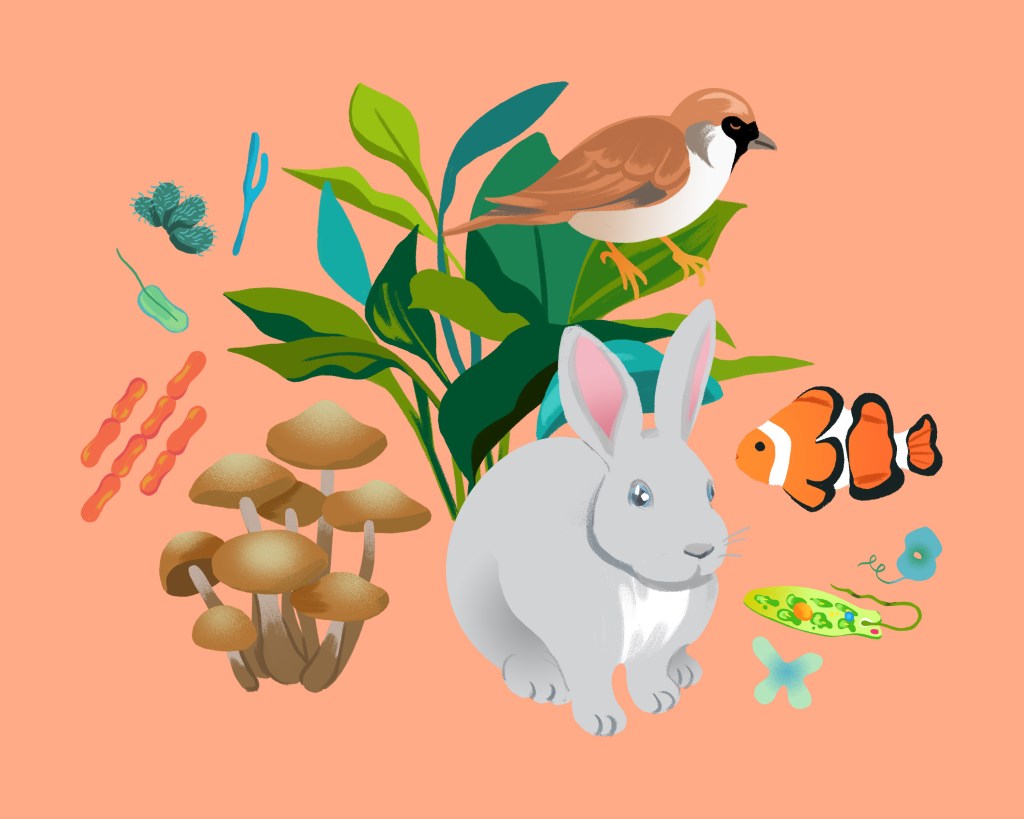
Biologists studying the diversity of life have a daunting task when it comes to classifying Earth’s organisms into groups. There are billions of different kinds of living things, from things as large as blue whales to things as small as bacteria and viruses. Just like in your snack classification activity, there are big categories, called kingdoms, which scientists use to organize living things. Even among biologists, there has been some debate about how to organize living things among kingdoms, and how many kingdoms there should be. Animals and plants aren’t salty or sweet like your snacks were, so what characteristics are used to differentiate between kingdoms?
Activity #2: Kingdom Classification
For this next activity, you will research the kingdoms of life and summarize what makes each kingdom unique. You’ll be working with the six kingdom model for this activity which includes the following kingdoms: Archaea, Bacteria, Protista, Fungi, Plantae, and Animalia. You can use this Google Slides Kingdom Classification Workbook to help you. Just make or download a copy, and fill it out as you go.
You’ll do the following for each kingdom:
- Research Sources: Research reputable sources about the characteristics of each kingdom. You’ll evaluate your sources based on their Currency, Relevance, Authority, Accuracy, and Purpose (see more details about these below).
- Gather Claims & Evidence: For each source, you’ll identify a claim or central idea about that kingdom, and support that claim with a quote or evidence from the reputable source you selected.
- Summarize: Write an objective summary of the characteristics of each kingdom using the sources and central ideas you’ve gathered.
Help Researching Sources:
- Start by using Galileo or Google to search the name of each kingdom. It might help to use the word “kingdom” in your search. (Example: “Kingdom Plantae.”)
- Track your citations as you go, gathering the website name and URL for each citation. You can print them out, or download a digital worksheet below to track your progress:
- Try using the CRAAP test to evaluate your sources! The CRAAP test is a list of questions to help you evaluate the information you find on the internet. Each letter stands for a different measure of quality:
- Currency: When was the information published or posted? Has it been revised or updated? Is it current, and are the links working?
- Relevance: Does the information relate to your topic, and does it answer your research question? Are you the intended audience, and is it at a level you can understand?
- Authority: Who is the author or publisher, and are their credentials, role, or organizational affiliations provided? Is there contact information provided? What is the domain or URL of the site?
- Accuracy: Where does the information come from, and is it supported by evidence? Has anyone reviewed or refereed the information? Can you verify the information in another source? Does the language seem unbiased?
- Purpose: Does the source attempt to inform, teach, sell, entertain, or persuade you? Does the author make their intentions clear? Is the information fact, opinion, or propaganda?
- Score each of your sources for their currency, relevance, authority, accuracy, and purpose, giving a 1 for those that don’t meet each criteria (e.g. “not at all current” or “not accurate”) and a 5 for those that do well in each category. Discard low-scoring sources.
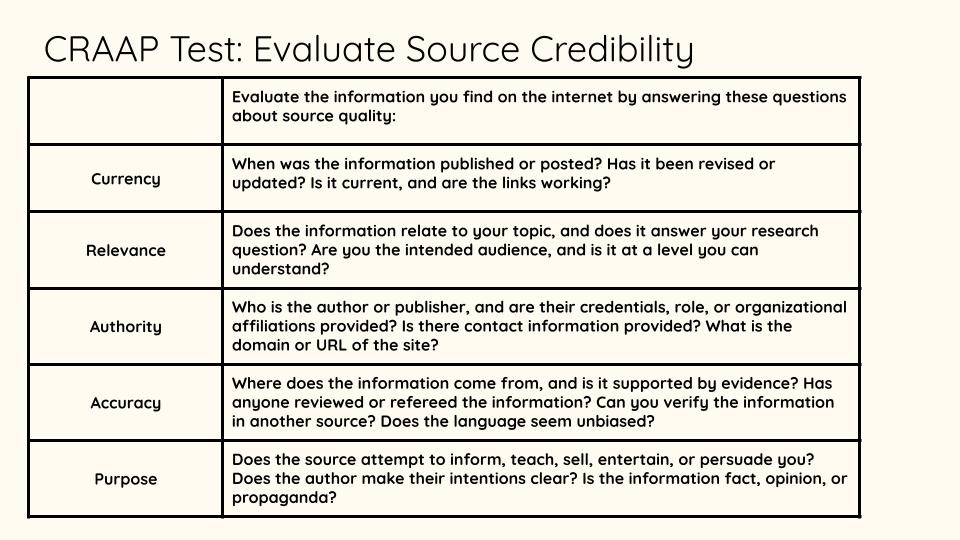
Help With Claims, Evidence, And Objective Summary For Each Kingdom:
- Look for a central claim or idea that answers your research question: What characteristics make this kingdom unique?
- Find quotes or evidence from the text in your source that support the central idea or claim you’ve identified. Collect that evidence in your notebook, or use the Kingdom Classification Workbook.
- Make sure that the claim or central idea that you identify answers your research question and is well supported by evidence and quotes. It’s a good idea to copy and paste quotes and evidence directly from your source as you work to keep track of everything. You can use the Claims and Evidence worksheet in the Kingdom Classification Workbook to help you organize your work, or use it to help you organize your notebook.
Help Summarizing:
- Using the claims and evidence that you’ve collected, write an objective summary that describes the kingdom and the characteristics of that kingdom.
Kingdom Classification System Criteria Presentation
Now that you have gathered all of your evidence, you are going to create a video, podcast, or other multimedia presentation, highlighting the characteristics of each kingdom to help guide young taxonomists and biologists as they learn how to classify organisms. Your informational presentation should be short—just two-four minutes—so plan on only spending about 30 seconds to describe each kingdom. Start by taking a look at the rubric for your project:
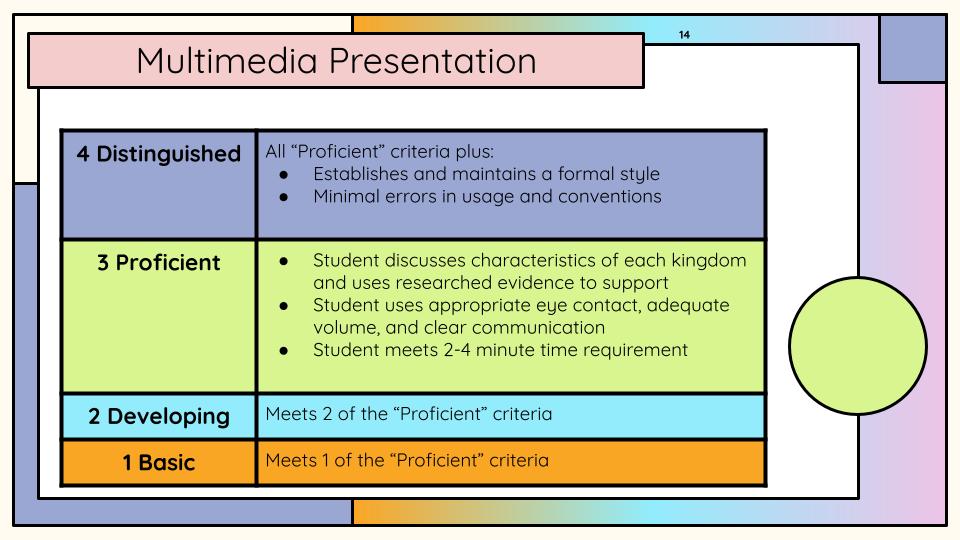
Plan: Start by sketching out the elements of your video, podcast, or multimedia in a notebook.
- What should you include? What are the most important elements to share with your audience?
- Keep your time constraints in mind: How can you quickly share what you’ve learned?
- What do you want your viewer or listener to walk away with?
- How would you like to make your presentation? Do you want to create a presentation and record yourself presenting it? Would you like to film yourself, and hold up printed or illustrated images that you need? Would you like to use text-to-speech software to read for you, or do it yourself? What elements you select will help you decide whether you are creating a podcast, video, or other multimedia.
Record: Review your multimedia plan with your teacher, then get recording! Edit and revise your presentation until it clearly explains each kingdom in the time allowed. Remember: Only two to four minutes long!
Present and Review: Play your presentation, video, or podcast for your peers, and have them complete a peer review form for each presentation. You can view and copy this sample peer review form.
Reflect and Refine: Finish the design process by reflecting on your personal experiences and peer feedback in your notebook. What went well? What do you want to improve upon for your next project?
Credits:
Written by Ann Vitello, Alexandra Ameduri
Illustrations: Gica Tam
Digital Production + Revisions: Ariel Zych
Copyediting: Lois Parshley
Meet the Writers
About Ann Vitello
Ann Vitello is a S.T.E.A.M. seventh-grade English Language Arts teacher at Bryan County Schools in Coastal Georgia. She has been invited to share interdisciplinary units at the National Science Teacher Association, National Council of Teachers of English, and Georgia Council of Teachers of Mathematics.
About Alexandra Ameduri
Alexandra Ameduri is a 7th-grade STEAM teacher at Richmond Hill Middle School. She began teaching in 2008 and received her post-graduate certificate of education from Durham University in England in 2009, and has taught third through sixth grade in both public and private schools in New York City and Savannah, Georgia.
